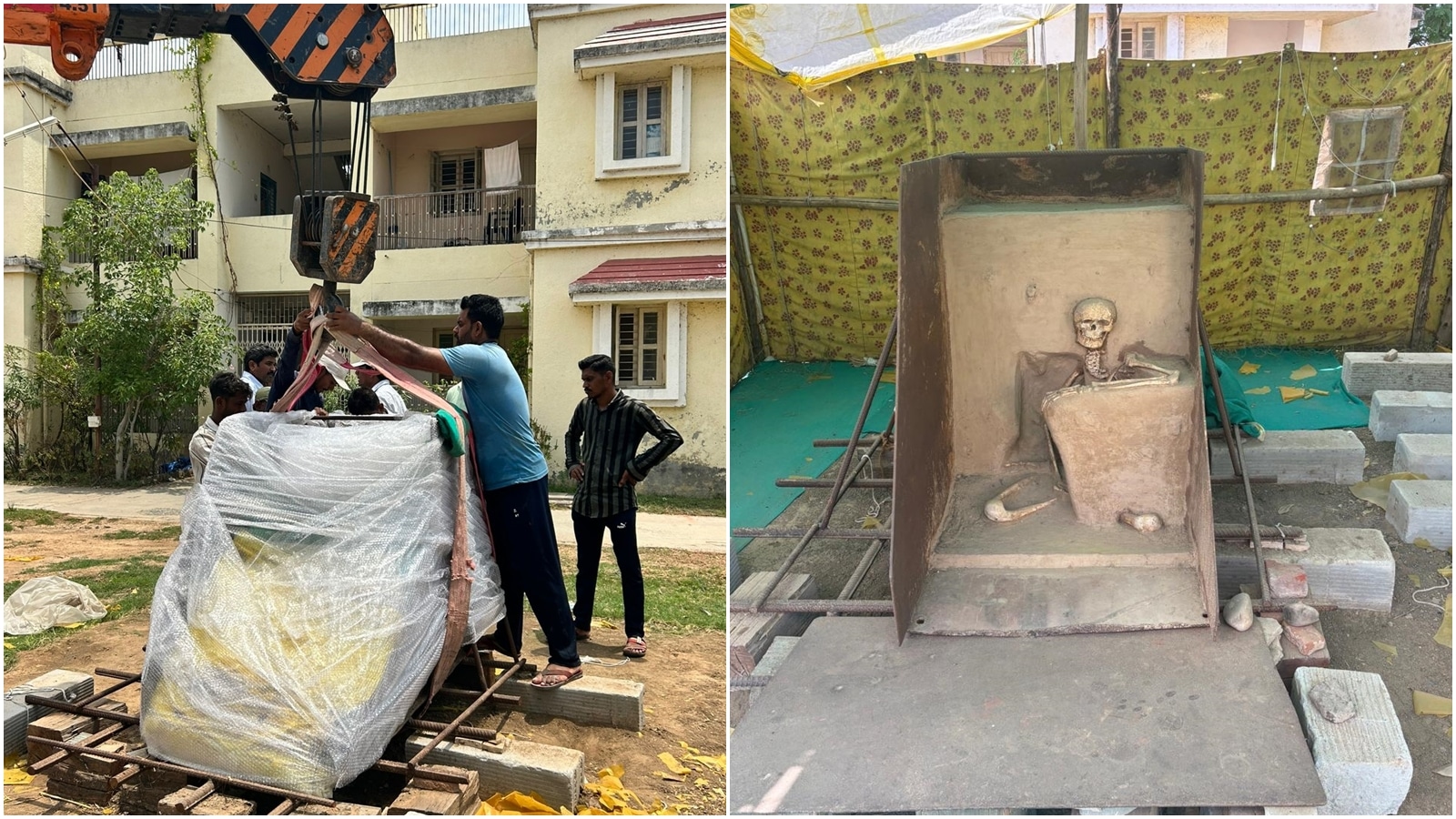A 1,000-year-old human skeleton unearthed in Gujarat has finally been moved to a museum after being left in limbo for six years. Discovered in a seated cross-legged position near Vadnagar in 2019, the skeleton had remained under a tarpaulin-covered shed—exposed to weather and neglect—due to bureaucratic delays.
Authorities have now relocated the rare find to the Archaeological Experiential Museum in Vadnagar, just a few miles from the original excavation site. The skeleton is currently on temporary display near the reception area, awaiting a final placement decision by the Archaeological Survey of India (ASI).
A Remarkable Discovery from the Solanki Period

Archaeologist Abhijit Ambekar, who led the excavation, identified the skeleton as belonging to the Solanki dynasty era (940–1300 CE), a period known for its architectural and cultural richness in western India. The posture of the remains suggests the individual may have undergone a samadhi burial—a revered practice where saints or ascetics are interred in a meditative seated position rather than cremated.
“Similar skeletal remains have only been found at three other sites in India,” Ambekar said. “This one’s exceptional state of preservation offers a rare glimpse into ancient Hindu mortuary customs.”
Preservation Against the Odds
The skeleton’s survival over a millennium can be attributed to the undisturbed soil composition of the site. Experts noted that the surrounding soil’s specific properties may have slowed decomposition, allowing the bones to remain largely intact.

Despite its archaeological significance, the skeleton remained in a fragile shed, unguarded and subject to rain, temperature changes, and human interference for years. This neglect was due to jurisdictional confusion between state and central agencies over artifact custody.
From Tent to Museum
After renewed media attention in early May 2025, the ASI and museum officials acted swiftly. Mahendra Surela, curator of the Vadnagar museum, said the move was carried out under expert supervision with “utmost care.” The museum may relocate the skeleton to its second floor, where a photograph of the find had already been on display for years.
“We are treating this not just as a skeletal artifact, but a piece of spiritual and cultural history,” said Surela. “This skeleton is more than bones—it’s a symbol of how ancient India honored its enlightened beings.”
Why This Matters
India’s archaeological landscape is dotted with treasures, but this skeleton stands out due to its posture, location, and survival. It also underscores challenges in heritage management—highlighting how even significant finds can face delays in recognition and care.
With its placement in the Vadnagar museum, the skeleton can now educate and inspire, offering a physical link to a bygone era of Gujarat’s religious and dynastic heritage.
Further Reading:
- What is Samadhi Burial in Hinduism?
- Solanki Dynasty: The Golden Age of Gujarat
- Top 10 Archaeological Discoveries in India
Tags: Solanki Dynasty, Indian Archaeology, Ancient Skeleton, Gujarat History, Samadhi Burial, ASI India, Vadnagar Museum









